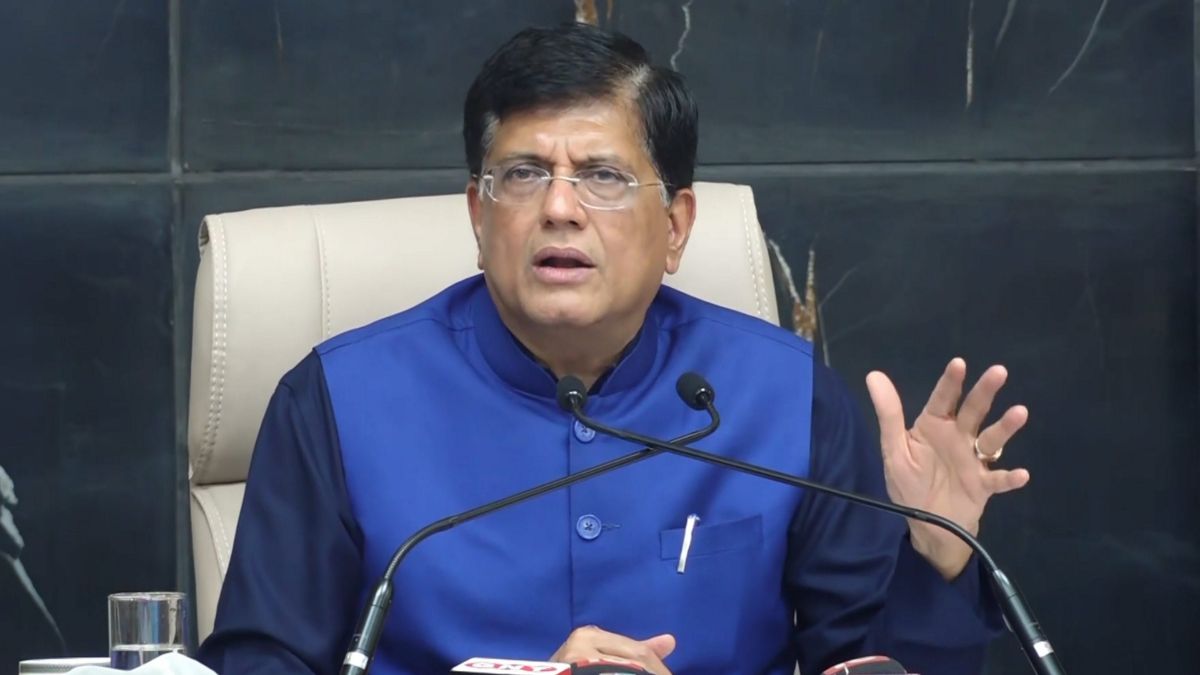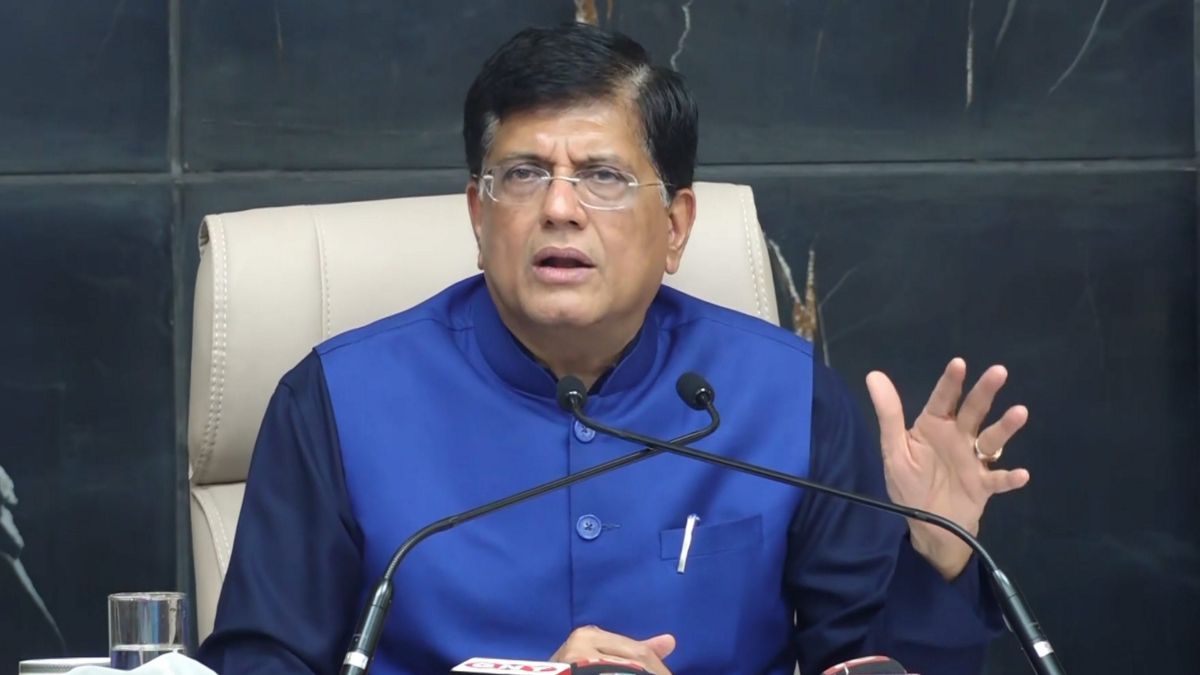From the green hydrogen mission to deliberations on GOBARdhan (Galvanizing Organic Bio-Agro Resources Dhan scheme), the Modi government has been on a green mission on a war footing. The Green Credit programme, MISHTI and Amrit Dharohar initiatives are pathbreaking. The PM – PRANAM and Bhartiya Prakritik Kheti Bio-Input Resource Centers will be instrumental in these Green growth initiatives. Focus on coastal shipping and waterways including vehicle replacement programmes are also in sharp focus. India has a huge potential to lead the world in Green energy and generate Green jobs. India has already achieved the target of 40 per cent contributions from non-fossil fuels in installed electricity capacity, nine years before the target date, under the aegis of PM Modi. India has also achieved the target of 10 per cent ethanol blending in petrol five months ahead of the due date, even as the nation is all set to achieve 20 per cent ethanol blending in petrol by 2025-26 instead of the scheduled 2030. The power sector is going to emerge as a major contributor to investment and growth in the country. 325 GW of renewable energy capacity will be added between now and 2030. India has the lowest cost of setting up RE capacity and its cost of “Green Hydrogen” will be the most competitive in the world. The country will need at least 80 GW of electrolyzer capacity by 2030. India is poised to transform from a net importer of energy to a net exporter of energy. While India is growing at 7 per cent, the power demand is growing at 10 per cent and hence, enough capacity in generation, transmission and distribution is being created to take care of the growing needs of the economy. A rather conservative estimate of 5 MMT has been projected for green hydrogen by 2030, which will be surpassed. Currently, 70 per cent of India’s electricity is generated by burning coal, but that will change going forward, with plans to produce 450 gigawatts (GW) of power through solar power and other renewable energy sources by 2030. Prime Minister Narendra Modi’s pledge for a greener future for India at COP26 in 2021 is being implemented passionately. At the COP26 climate summit in Glasgow, Modi pledged that by 2030, India will produce more energy through solar and other renewables than through fossil fuels. Modi said at COP26 in 2021, “First, India will increase its non-fossil energy capacity to 500 GW. Second, by 2030, 50% of our energy requirements will come from renewable sources.” India’s Bhadla Solar Park is the largest solar park in the world, with 2245 megawatts of commissioned solar projects. Around 10 million blue solar panels in the solar park stretch over an area of 5700 hectares in Bhadla, a village in the Jodhpur district of the arid state of Rajasthan. The area is almost the size of San Marino. India, which has a population of around 1.4 billion, is on the frontline of climate change mitigation, globally. According to the International Energy Agency (IEA), India will have to expand its power system in the next two decades, to meet the growing energy demands, and has to tackle toxic air quality in big cities at the same. India’s green energy ambitions are an aspirational target to show the world we are moving in the right direction. Some self-styled experts claim this ambition seems “highly unrealistic”, because of various demand and supply challenges. But with PM Modi at the helm, dreaming big and executing massive projects with razor-sharp finesse, are par for the course. The Bhadla Solar Park is an example of how innovation, technology, and public and private finance can result in rapid changes. India’s Green energy has increased to over 100 gigawatts, which is five times what was generated from renewable sources a decade back. India will be able to meet its 2030 goals if the Green energy sector grows at the same pace. The Ministry of New and Renewable Energy (MNRE) has revised and raised the renewable energy potential for India to an estimated 900 GW. Solar is seen to have the largest potential, with a revised estimate of 750 GW (taking into consideration the use of 3% wasteland for solar installations), followed by wind with 102 GW (at 80 m mast height); the National Institute of Wind Energy (NIWE) has revised the estimate for wind power to 302 GW at 100 m mast height. The potential for small hydro and bio-energy is 20 GW and 25 GW, respectively. The southern, western, and northern regions of India are expected to install more than 91 per cent of the total target while the remainder is expected to be contributed by the northeastern and eastern regions. Maharashtra has the highest target of 22 GW followed by Tamil Nadu with 21.5 GW. From 57 GW in 2016-17, the total installed grid-connected renewable energy capacity reached 78 GW at the end of 2018-19. In 2018 -19, RE contributed 21.8 per cent of the total installed power generation capacity in the country. Of this, the share of wind was 35.6 GW (10 per cent), followed by solar with 28 GW (7.9 per cent), small hydro with 4.59 GW (1.29 per cent), biomass and co-generation with 9 GW (2.56 per cent) and waste-to-energy with 0.13 GW (0.04 per cent). India added 1.5 GW wind capacity in 2018-19, taking the total installed wind capacity to 35 GW. Maximum capacity addition is seen in the states of Tamil Nadu (8968 MW) and Gujarat (6073 MW). With the installation of 5.7 GW of solar power in 2018-19, the cumulative installed capacity of solar reached 28 GW. This was a quantum jump over the previous year. The leading solar power States in India (in terms of installed capacity that year), are Karnataka, Telangana, Rajasthan, Andhra Pradesh, Tamil Nadu, Gujarat and Madhya Pradesh. India is the world’s third-largest producer of electricity having a total installed capacity of 356 GW (3, 56,100 MW). Of this, around 64 per cent is from thermal energy (54.60 per cent from coal, 7 per cent from gas and 0.2 per cent from diesel), 2 per cent from nuclear power, 13 per cent from large hydro, and 21.8 per cent from renewables (wind, solar, biomass, waste-to-energy). For the first time in 2016-17, renewable capacity addition at 11.3 GW exceeded that of conventional energy, and the trend continued in 2018 - 19 with capacity addition at 8.6 GW. Like grid-connected renewable energy (RE), a major leap in installations was also seen in the off-grid sector. With the rapid decline in costs of off-grid RE systems coupled with an increased level of awareness among the rural masses, private and self-sponsored off-grid RE system installations grew due to market economics. During the year, the solar systems of capacity 244.2 MW which includes solar study lamps, solar home lights, solar street lights, solar pumps, mini/microgrids and Power plants installed across India. NTPC Renewable Energy Ltd (NTPC REL), a 100 per cent subsidiary of NTPC, is setting up a 4750 MW renewable energy park at Rann of Kutch in Khavada, Gujarat. This will be India’s largest solar park to be built by the largest power producer in the country. NTPC REL has plans to generate Green hydrogen on a commercial scale from this park. As a part of its green energy portfolio augmentation, NTPC Ltd, India’s largest energy-integrated company aims to build a 60 GW Renewable Energy Capacity by 2032. Currently, the state-owned power major has an installed capacity of 66 GW across 70 power projects with an additional 18 GW under construction. Recently, NTPC has also commissioned India’s largest Floating Solar of 10 MW (ac) on the reservoir of Simhadri Thermal Power Plant, Andhra Pradesh. Further, a 100 MW Floating Solar Project on the reservoir of Ramagundam Thermal Power Plant, Telangana will also be commissioned, soon. Additionally, NTPC RE Ltd. has recently signed an MoU with UT, Ladakh and Ladakh Autonomous Hill Development Council (LAHDC) for the generation of Green hydrogen and deployment on FCEV buses. The signing of the MoU was also marked with the inauguration of NTPC’s first solar installations in Leh in the form of solar trees and a solar carport. Even though it supports the second-largest population in the world, India’s sustained efforts have ensured that its per capita CO2 emissions are much lower than the global average. The US emits 14.7 tonnes per capita, China emits 7.6 tonnes per capita, and India’s CO2 emissions amount to 1.8 tonnes per capita. The global power sector is undergoing an accelerated transformation due to technological innovations and response to climate change protocols. At COP-21 in Paris in 2015, India committed to a 40 per cent share of power generation from non-fossil fuel sources. We have achieved this target a decade ahead of the 2030 timeline, thanks to Prime Minister Modi’s unassailable leadership. Under the National Green Hydrogen Mission, India is working to achieve the target of 5 million tonnes per annum of Green hydrogen production capacity by 2030, with the government allocating Rs 19,000 crore to incentivise the private sector in this segment. Prime Minister Modi has repeatedly highlighted how using waste to create fuels has a lot of potential in India, particularly in segments like producing ethanol from farm waste and biogas from agricultural and municipal waste. Today the Gobardhan Yojana is an important component of India’s biofuel strategy. In this budget, the government has announced plans to set up 500 new plants under the Gobardhan Yojana. These are not like old-fashioned plants. The Modi government will spend Rs 10,000 crore on these modern plants. On the scrapping of old vehicles too, the Modi government has made it a crucial part of India’s Green growth strategy, with vehicle scrapping all set to become a huge market in India. India has always shown its willingness in leadership to fight climate change. The country’s vision is to achieve “Net Zero Emissions” by 2070, in addition to attaining the short-term targets which include a) Increasing renewables capacity to 500 GW by 2030. b) Meeting 50 per cent of energy requirements from renewables. c) Reduce cumulative emissions by one billion tonnes by 2030 and d) Reduce emissions’ intensity of India’s gross domestic product (GDP) by 45 per cent by 2030. India’s experience will be valuable to other developing nations as they translate their climate pledges into actions and undertake energy transitions towards a more sustainable energy future. The budget for 2023-24 (FY24) will play a key role in establishing the country as a lead player in the global Green energy market. The potential of segments like solar, wind energy, and biogas in India “is no less than any gold mine or oil field for our private sector”. Apart from these three segments, PM Modi has also repeatedly highlighted investment opportunities in areas like the Green hydrogen ecosystem, which includes fuel cells, electrolysers, green steel, waste-to-energy projects, battery storage, and vehicle scrapping, among others. India’s commanding position in the renewable energy space will ensure a commensurate change in the world. India has been the fastest under the aegis of Prime Minister Modi when it comes to renewable energy capacity addition among major economies since 2014. The country’s excellent track record proves its ability to achieve objectives in the Green energy space, well ahead of schedule. India has progressively decoupled economic growth from Greenhouse gas emissions. For example, the Net Zero Emissions target by 2030 by Indian Railways alone will reduce emissions by 60 million tonnes annually. Similarly, India’s massive UJALA LED bulb campaign is reducing emissions by 40 million tonnes annually. To further complement these ongoing efforts, India launched the National Hydrogen Mission to make India the world’s largest hydrogen hub. The Modi government is also setting up a renewable energy park the size of Singapore in Gujarat. Prime Minister Modi also announced at COP26 that India would become carbon neutral by 2070. He said finance from rich, historic emitters is important to fulfil such emissions-cutting pledges. Addressing more than 120 leaders at COP26, Modi said, “India expects developed countries to provide climate finance of $1 trillion at the earliest. Today it is necessary that as we track the progress made in climate mitigation, we should also track climate finance”. “Let us turn to the Sun, to power our future”, is yet another iconic quote by PM Narendra Modi, at the launch of International Solar Alliance in Paris, in 2015. Marrying energy security with environmental friendliness is never easy due to the natural conflict involved. However, under Prime Minister Narendra Modi, India has managed this conflict seamlessly. Modi’s clarion call of ‘One World, One Sun, One Grid’, is redefining the very essence of how renewables will shape the destinies of many like-minded nations, in the years ahead. Green is indeed the new Black!! The author is an economist, national spokesperson of the BJP and bestselling author of ‘The Modi Gambit’. Views expressed are personal. Read all the Latest News, Trending News, Cricket News, Bollywood News, India News and Entertainment News here. Follow us on Facebook, Twitter and Instagram.
India’s commanding position in the renewable energy space will ensure a commensurate change in the world
Advertisement
End of Article


)

)
)
)
)
)
)
)
)



